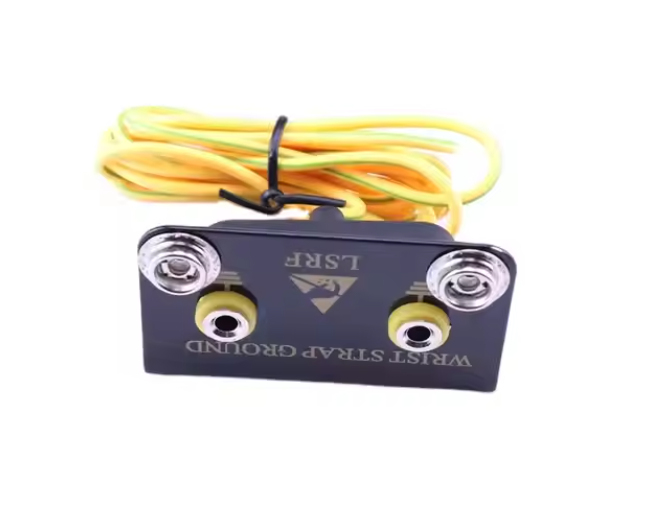ESD Earthing


Feature:
Commonly used in SMT industry and production lines.
Economical and easy to operate.
Attention:
When operating, it is to discharge anti static on human bodies to the ground through wrist strap and grounding wire, therefore, when using the product the human skin must touch the wrist strap. The grounding wire shall also be directly connected to the ground to ensure its smooth grounding and performance.
Details:
| Material of strap | White yarn+conductive fabric+stainless steel |
| Material of wire | PU |
| Color | Dark Blue |
| Charge Decay | ≤0.1sec |
| Diameter of wire | 2.5mm |
| Length of coil cord | 3.0M |
| Surface resistance | ≤800K(Ω) |
| Application | Electornic product manufacture process |
ESD earthing (also known as ESD grounding) is the process of connecting a person, tool, or surface to the Earth or a grounded system to safely discharge static electricity. This is crucial in environments where electrostatic discharge (ESD) can damage sensitive electronic components.
What Is ESD Earthing?
When people move or work with materials, they can build up static electricity. If this static charge is not controlled, it can discharge into electronic parts and cause:
Malfunctions
Permanent damage
Data loss
ESD earthing provides a controlled path for static charges to safely flow into the ground, preventing sudden discharges.
How to Use ESD Earthing?
Here’s how to properly ground ESD-sensitive workstations and personnel:
1. Use an ESD Wrist Strap or Bracelet
Wear the strap on bare skin.
Connect it to a grounded point like:
ESD grounding plug
Grounded ESD mat
Metal part of an ESD-safe bench
2. Use ESD Mats
Place an anti-static mat on the workbench or floor.
Connect the mat to ground using a grounding cord.
3. Foot Grounding (for Standing Work)
Wear ESD shoes or heel straps.
Make sure the floor is ESD-safe or grounded.
4. Check for Proper Grounding
Use an ESD tester to verify:
Your wrist strap is grounded.
The mat has a good ground path.
Your shoes/straps are working properly.
Best Practices
Always check grounding connections before working.
Use ground monitoring devices for continuous safety.
Make sure all parts of the ESD system are interconnected and connected to Earth ground.
